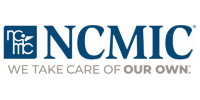Arlington, Va.--The American Chiropractic Association (ACA) has filed a class action lawsuit against American Specialty Health Inc. and American Specialty Health Networks Inc. (collectively, "ASHN"), and CIGNA Corporation and Connecticut General Life Insurance Company (collectively, "CIGNA"). The litigation alleges a litany of problems with the defendants, including arbitrary reductions of care, lack of communication to providers and patients resulting in coverage and payment errors, and interference with doctors' duty to exercise professional clinical judgment in managing patients' treatment plans.
Filed on Dec. 28, 2012, ACA's litigation--which is being handled by the law firm Pomerantz Grossman Hufford Dahlstrom & Gross LLP--represents a nationwide class of health care providers and subscribers who were subjected to ASHN and CIGNA's improper coverage and reimbursement practices.
Furthermore, CIGNA allegedly failed to comply with terms and conditions of its plan to afford its subscribers or their health care providers an opportunity to obtain a "full and fair review" of denied or reduced reimbursement, and to make appropriate and non-misleading disclosures to subscribers or their health care providers--an alleged violation of the Employee Retirement Income Security Act of 1974 (ERISA), the federal law governing private employee benefit plans. Additionally, the litigation outlines various allegations, including:
- Use of false and misleading Explanations of Benefits relating to chiropractic claims (required under ERISA for informing subscribers of how their claims have been processed), which interferes with the doctor-patient relationship
- Manipulating charge and payment data, allowing ASHN and CIGNA to pass on excessive costs to subscribers, while distorting the amounts providers actually receive in benefit payments
- ASHN's restrictions of care via the pre-authorization process and provider contract provisions that prevent patients from having access to the full breadth of their benefits and in contradiction to their certificates of coverage--a violation of ERISA
- ASHN and CIGNA's imposition of excessive co-pay requirements on subscribers, another ERISA violation
- CIGNA's improper prevention of doctors of chiropractic (DCs) from providing services that fall within their scope of practice, in violation of state provider non-discrimination laws
- ASHN and CIGNA's violation of various state prompt payment laws
ACA's suit requests the court to award injunctive, declaratory and other equitable relief to ensure ASHN and CIGNA's compliance with ERISA as well as other state and federal laws and regulations.
"ACA was compelled to take this action against ASHN and CIGNA because their egregious practices are undermining patient care and doctor-patient relationships. DCs feel they have to choose between acting in the best interest of the patient, and adhering to the requirements imposed by ASHN and payers they work with," said ACA President Keith Overland, DC. "Since 2002 we have worked to try and improve these issues. It is now time for action and we will not rest until patients across the nation receive all the care they need and have paid for through their insurance premiums."
Providers who believe they and/or their patients have been affected by ASHN and/or CIGNA's improper practices can visit the
Chiropractic Networks Action Center where they will find instructions and forms that can be used to submit a complaint to ACA.
The American Chiropractic Association (ACA), based in Arlington, Va., is the largest professional association in the United States representing doctors of chiropractic. ACA promotes the highest standards of patient care and ethics, and supports research that contributes to the health and well-being of millions of chiropractic patients. Visit
www.acatoday.org.




